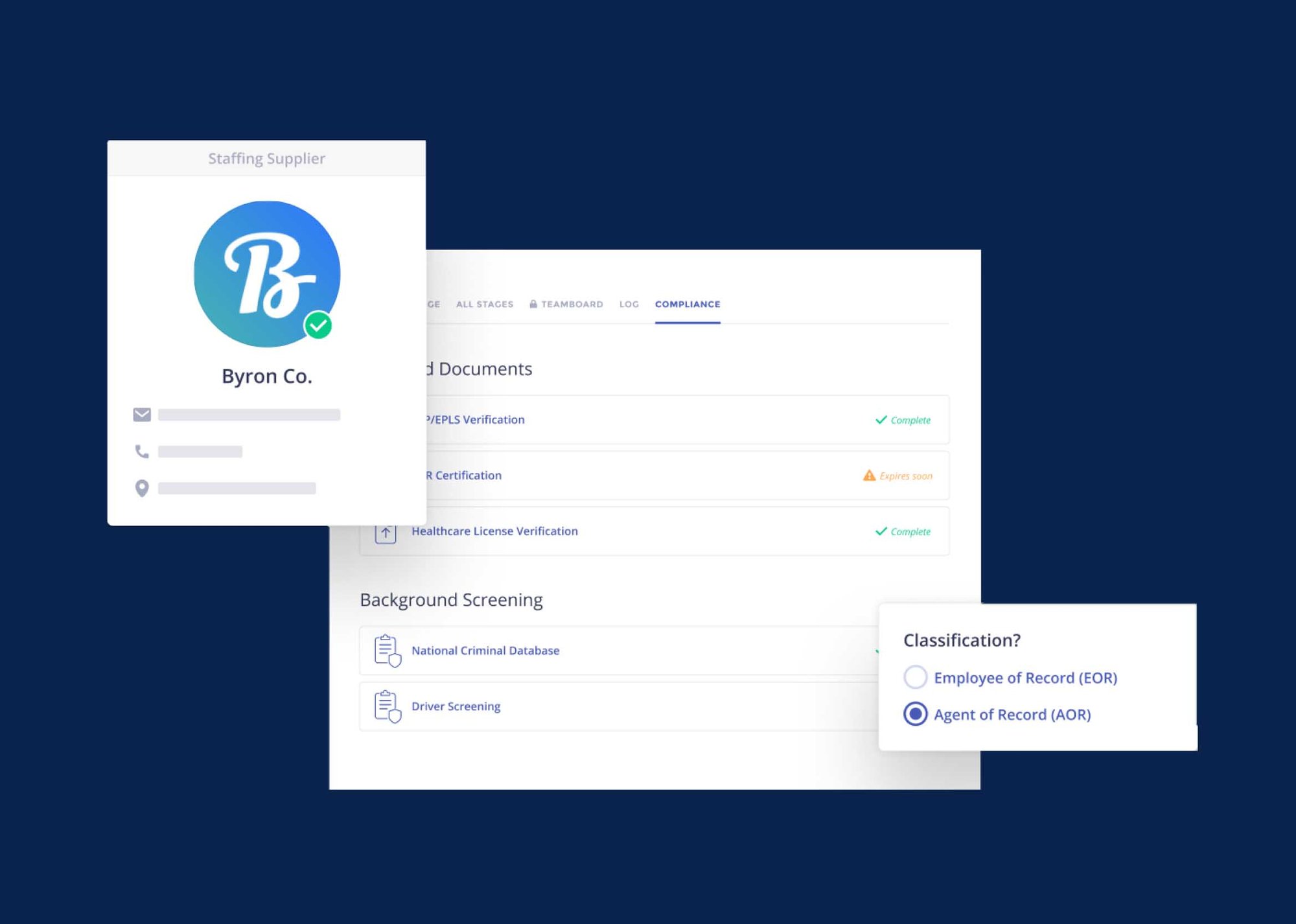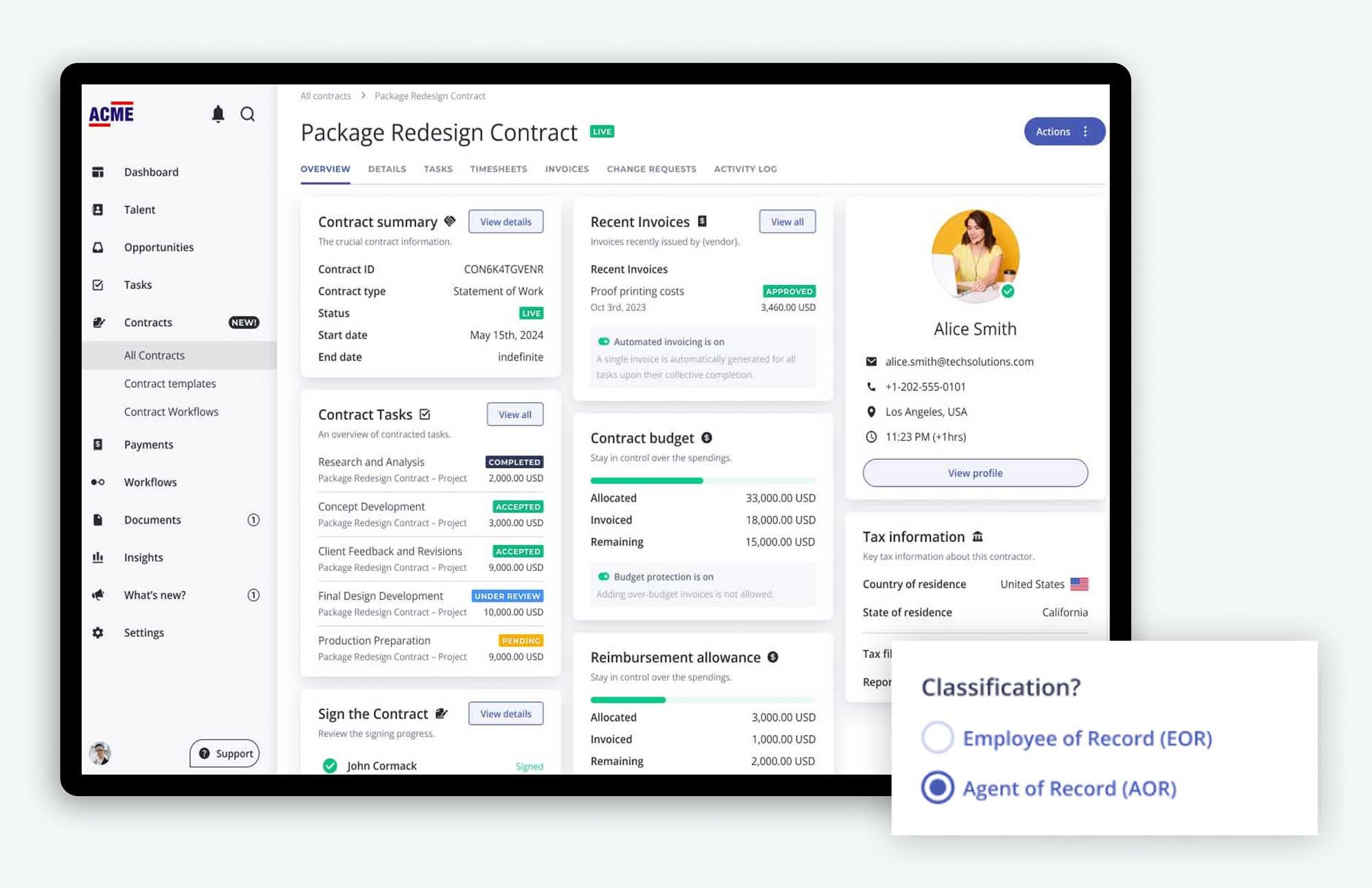INDEPENDENT CONTRACTOR CLASSIFICATION
Reduce Legal Risks and Avoid Costly Penalties


Stay Compliant With Contractor Classification
Our streamlined Independent Contractor Classification service helps you navigate labor laws without the complexity. With real-time compliance tracking and misclassification protection, you can confidently determine whether a worker is an employee or independent contractor by analyzing factors like the degree of permanence of the work relationship and opportunity for profit.
Expert Classification Analysis
Get accurate determinations of worker status, including the nature and degree of the relationship and the degree of control over how workers perform the work.
Misclassification Indemnification
Protection against penalties for misclassification under final rule changes and evolving labor laws.
Localized Contracts & Compliance Tracking
Ensure compliance with United States labor laws and independent contractor status regulations, tracking changes like the new rule effective March 11, 2024.
Let’s Talk About Your Needs—Schedule a Call Today
Schedule a call to explore how Worksuite can meet your needs. Discuss pricing and specific requirements to ensure our solution aligns with your goals.